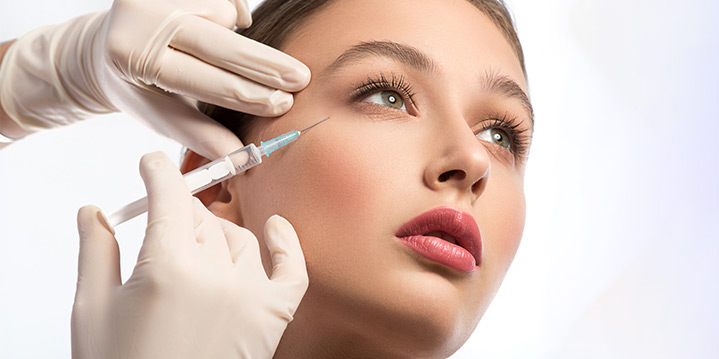
Dermal fillers have become a popular non-surgical cosmetic treatment for enhancing facial features and reducing signs of aging. As their popularity grows, many individuals wonder whether these treatments are universally safe—particularly for people with different skin types. While fillers are generally considered safe, there are specific factors related to skin type that can influence how the skin reacts to the injections.
Understanding Skin Types and Their Characteristics:
Skin types are typically classified into five categories: normal, dry, oily, combination, and sensitive. Each skin type has unique characteristics that can affect how it responds to cosmetic procedures Filler Injections in Dubai (حقن الفيلرز في دبي). For example, sensitive skin may be more prone to irritation or redness, while oily skin might be more resistant to dehydration but could have other concerns like enlarged pores. These differences are important to consider when evaluating the safety of fillers, as skin reaction and healing time can vary accordingly.
How Fillers Work Beneath the Surface:
Dermal fillers, commonly made from hyaluronic acid or other biocompatible substances, are injected beneath the skin to restore volume, smooth wrinkles, and enhance facial contours. They work by filling in spaces under the skin or stimulating collagen production, depending on the type of filler used. Since fillers are injected below the skin’s surface, they are typically unaffected by external oiliness or dryness. However, the skin’s structure and underlying conditions can still play a role in how fillers settle and integrate with surrounding tissues.
Safety of Fillers for Melanin-Rich Skin:
One of the key considerations in filler safety is how skin with higher levels of melanin reacts to injections. Individuals with medium to deep skin tones may have concerns about hyperpigmentation or scarring after cosmetic procedures. Fortunately, when administered properly, dermal fillers are safe for darker skin types. The risk of post-inflammatory hyperpigmentation is minimal compared to more invasive procedures. However, extra care may be needed to avoid trauma during injection, as melanin-rich skin may react more strongly to irritation or pressure.
Sensitive Skin and Its Reactions to Fillers:
Sensitive skin presents another potential challenge. People with this skin type are more likely to experience redness, itching, or swelling following procedures. Though dermal fillers are designed to be non-reactive and are often formulated with substances already present in the body, sensitive skin may still respond with mild side effects. These reactions are usually temporary and can be managed with simple post-treatment care. Pre-treatment consultations often help identify individuals with reactive skin so that the injection technique and product type can be adjusted accordingly.
Acne-Prone and Oily Skin Considerations:
Oily and acne-prone skin types might raise questions about how fillers interact with active breakouts or clogged pores. Generally, fillers are not injected directly into areas with active acne, as this could increase the risk of infection or inflammation. However, once the acne is controlled or in remission, individuals with oily skin can safely receive fillers. In fact, fillers can sometimes help improve the appearance of acne scars by plumping up indented areas. Proper skin preparation and hygiene before and after treatment are especially important for this skin type.
Hydration and Dry Skin Compatibility:
Dry skin often lacks natural oils and moisture, which can lead to flaking or irritation. Interestingly, fillers can be particularly beneficial for dry skin, especially those formulated with hyaluronic acid, as this substance naturally attracts and retains moisture. These fillers not only restore volume but also improve skin hydration over time. While dry skin may initially appear dull or textured, fillers can help revitalize its appearance by smoothing out fine lines and restoring a more supple texture. Still, good hydration and skincare routines are essential to support post-injection recovery.
Overall Safety and Risk Minimization:
Regardless of skin type, filler injections are generally safe when performed under appropriate conditions. The most common side effects—bruising, swelling, and temporary redness—usually resolve within a few days. Skin type may influence how pronounced or persistent these effects are, but serious complications are rare. To minimize risks, it’s important to follow recommended pre- and post-care practices, such as avoiding excessive sun exposure, staying hydrated, and refraining from strenuous exercise immediately after the procedure. Individual responses vary, but with proper precautions, fillers can be a safe option for enhancing one’s appearance across all skin types.
Conclusion:
Filler injections offer a versatile and effective way to enhance facial features and combat signs of aging for people with various skin types. While each skin type—whether oily, dry, sensitive, or melanin-rich—may respond slightly differently, fillers are generally safe when properly administered and combined with appropriate aftercare. Understanding your skin’s unique needs and characteristics can help ensure the best results with minimal side effects. Ultimately, with the right approach, filler treatments can be a reliable option for individuals seeking a natural and rejuvenated appearance regardless of their skin type.